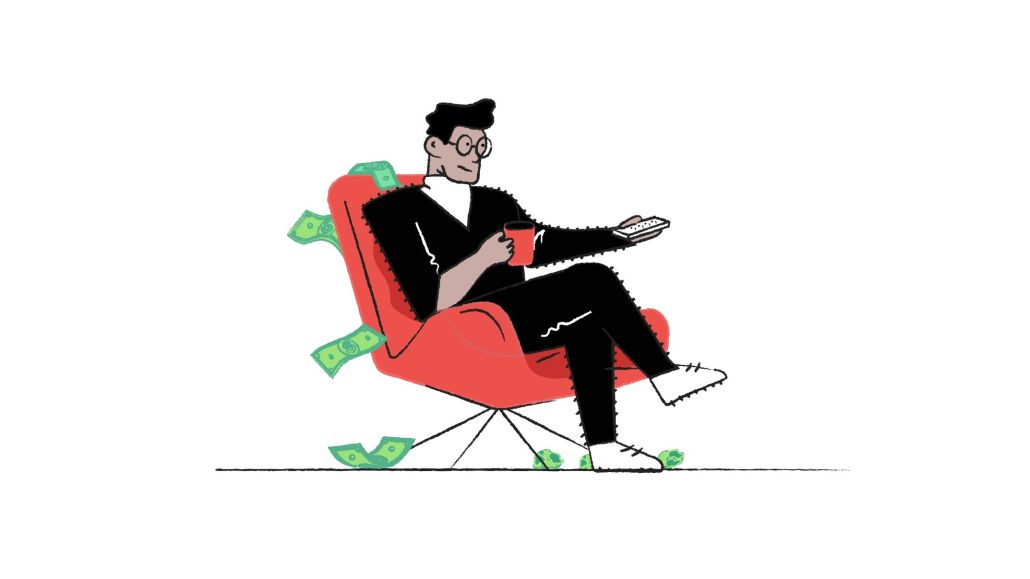Save 50% on a 3-month Digiday+ membership. Ends Dec 5.
‘De-correlated with economic fluctuations’: Despite pandemic uncertainty ahead advertisers will spend more in all categories

It’s the season for forecasting 2022. With the range of predictions, one is consistent: advertisers will keep spending more than 2020 and more in each category no matter what. Even the emergence of Omicron and the possibility of further lockdowns don’t seem to have skewed that outlook. Advertisers have gotten better at managing the risks.
Historic supply chain shortages? No problem; reallocate media dollars to compensate. Full-fledged lockdowns to stem the spread of a new, more viral variant of the coronavirus? Not so fast: counter measures aren’t expected to derail the recovery so need to pull the ripcord on ad spending. As real as these macro challenges are, they don’t necessarily determine how many media dollars are spent as much as they do decide where they go — more often than not online.
The gaps between the haves and the have nots in digital media will widen as more money is spent on it — just as they always have.
To clarify: When the pandemic kneecapped the economy last year, companies took a hard look at their advertising plans. The biggest beneficiary of those decisions: online media owners.
More than six in $10 (64.4%) dollars that are spent on advertising this year will go toward digital ads, GroupM estimated. That’s up from 60.5% of the total in 2020 and 52.1% the year before. Unsurprisingly, those dollars are going to the same places. Somewhere between 80% and 90% of digital advertising outside of China will go to Google, Facebook and Amazon, GroupM estimated.
But the more this happens the more the market is going to continue to split into one larger portion of high quality ad inventory built to close the gap between ad exposure and conversions, and a long tail of poorly targeted impressions, far more prone to fraud and so-called malvertising. The fact is, of course, that the gaps between the haves and the have nots in digital media will widen as more money is spent on it — just as they always have.
The phenomenon is further proof that for all the hype around the digital boom it’s also reinforced the position marketers are in: between a rock and a hard place. They don’t want to depend on those platforms that grade their own performance but find it hard to ditch them due to the incredible value they bring in terms of the number of users.
Take social media, for example. Despite the boycotts, disinformation scandals and brand safety issues that have plagued the sector over the last two years, global social media advertising will overtake television ad spend next year, according to Zenith. The media agency expects social media ad spend will reach $177 billion in 2022, squeaking past TV advertising at an estimated $174 billion. As ever, marketers go wherever people direct their attention. According to eMarketer, adult social media users in the U.S. are spending 60.4% of their time with Facebook and Instagram this year. Pandemic-driven changes like this are a huge driver of ad spend. More importantly, they’re likely here to stay.
“When we look at the total ad spend in aggregate, it’s increasingly de-correlated with economic fluctuations, simply because of the huge organic growth factors that boost, in particular, digital formats, and coming from millions of small business,” said Vincent Letang, managing partner of market intelligence at IPG’s Magna.
On the latter point, it’s turning out to be a clearer, more timely snapshot of the ad economy than any gross domestic product figure ever could.
“Economic growth is correlated to advertising, but I don’t believe it causes advertising by itself,” said Brian Wieser, GroupM’s global president of business intelligence, and a longtime prognosticator of media fortunes. “Instead, whether or not an economy is predisposed towards producing new kinds of companies who are more likely to spend more on advertising while ‘replacing’ those who spend less is going to drive more advertising than anything else could, and likely has been occurring in the U.S. and U.K. in particular in the past several years — even more so during the pandemic.”
In short, economic uncertainty has become a less important factor in influencing advertising investment decisions. Granted, it’s still a factor; decision-makers believe more now than before that consumers and businesses will not only have more money to spend than before but they will also be more inclined to spend it. Even so, the magnitude of growth seen this year suggests it’s more than down to a straightforward rebound — structural factors are propelling the sector forward faster than analysts anticipated.
“If we set inflationary pressure and adjusted wage growth aside, one could determine that all boats rise with a rising tide. Advertising is likely a boat that rises first and fast,” said Tom Triscari, an economist at consulting firm Lemonade Projects. “Regarding structural factors, the pace of digitization is moving quite fast which would lead one to believe that labor productivity is rising faster than expected. And just like Marc Andressen famously said ‘software is eating the world,’ in layman’s terms that means ‘better, faster, cheaper’ is growing the world.”
More in Marketing

Amid economic pressure, brands usher in Black Friday by trimming deals
While some companies are touting “bigger than ever” discounts for Black Friday and Cyber Monday, others are dialing back deals.

How consumers are using AI to shop in 2025 — by the numbers
AI is reshaping the 2025 holiday shopping journey, from conversational discovery to commerce.

The case for and against AI-driven SEO in the zero-click era
As generative AI reshapes search, marketers debate the value of committing (or overcommitting) to an AI SEO strategy.








